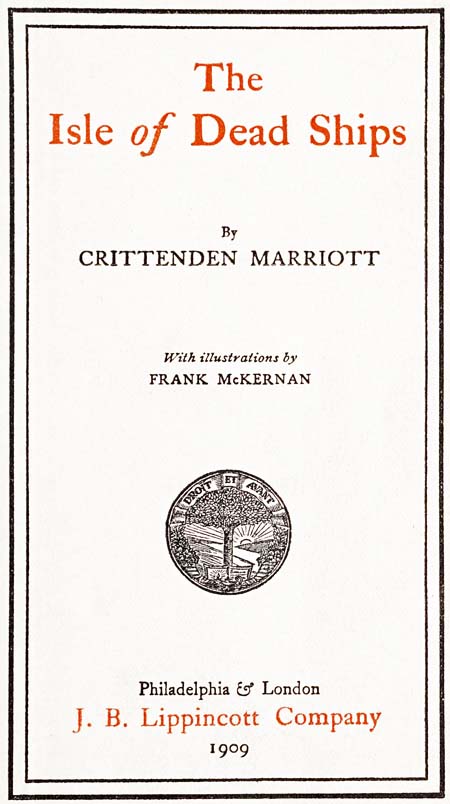THE ISLE of DEAD SHIPS

“NO,” HE MURMURED, SADLY. “IT IS NOT LAND. IT IS
WRECKAGE.”
Page 74.

The
Isle of Dead Ships
By
CRITTENDEN MARRIOTT
With illustrations by
FRANK McKERNAN

Philadelphia & London
J. B. Lippincott Company
1909
Copyright, 1908
By Crittenden Marriott
Copyright, 1909
By J. B. Lippincott Company
Published September, 1909
Printed by J. B. Lippincott Company
The Washington Square Press, Philadelphia, U. S. A.
PROLOGUE
There is a floating island in the seawhere no explorer has set foot, or, settingfoot, has returned to tell of whathe saw. Lying at our very doors, in thedirect path of every steamer from theGulf of Mexico to Europe, it is less knownthan is the frozen pole. Encyclopediaspass over it lightly; atlases dismiss itwith but a slight mention; maps do notattempt to portray its ever-shifting outlines;even the Sunday newspapers, sokeen to grasp everything of interest,ignore it.
But on the decks of great ships in thelong watches of the night, when the trade-windsnores through the rigging and thewaves purr about the bows, the sailortells strange tales of the spot whereruined ships, raked derelict from all thesquare miles of ocean, form a great[6]island, ever changing, ever wasting, yetever lasting; where, in the ballroom ofthe Atlantic, draped round with encirclingweed, they drone away their lives, balancingslowly in a mighty tourbillion tothe rhythm of the Gulf Stream.
Fanciful? Sailors’ tales? Stories fitonly for the marines? Perhaps! Yet benot too sure! Jack Tar, slow of speech,fearful of ridicule, knows more of thesea than he will tell to the newspapers.Perhaps more than one has drifted to theisle of dead ships, and escaped only to bedisbelieved in the maelstroms that awaithim in all the seaports of the world.
Facts are facts, none the less becausepassed on only by word of mouth, andthis tale, based on matter gleaned beneaththe tropic stars, may be truer than menare wont to think. Remember Longfellow’swords:
